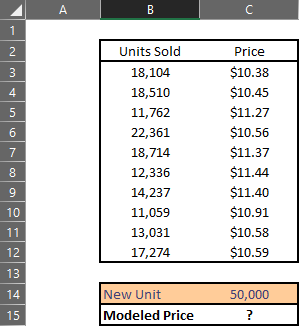


When your data are tightly distributed around the trend, your R2 value will be close to 1.0. You may recall from a high-school statistics/algebra class that an R2 value is actually the "goodness-of-fit" for your data.
display the "R-squared value on chart". It will show up in your graph if you select "Display Equation on chart". This option is at the bottom of the window. display the equation for the trend line. Excel will do an "Auto" name, but if you want to change it, now is the chance. Before you exit the window, ensure that you:. For instance, if you want to do a yearly average, you would select "12" as your period. It automatically starts with "2", which means that it will average 2 month increments to establish a data point, but you can increase the increment. In this case, while the tool window is open, change the averaging period. We recommend you start with the "Linear" option, but you could also repeat the process and use the "Moving Average" option later. Excel will ask you what statistical method you want to employ to calculate a trend. This will open the "Format Trendline" tool window (Figure 4.54 above). Right click and select "Add Trendline."įigure 4.54: Screenshot showing the "Format Trendline" tool window as discussed.Credit: Microsoft Excel Screenshot Simply click on the data series line in your graph, and each data point should then be highlighted. Alright, so now we are going to add a trend line to see if there isn't a longer-term signal embedded in the monthly data. Obviously we only plotted 3 years of data, but you should have plotted at least 30 years or more from your datasets so you could look at this issue in your data. Can you think of any reasons why this location in Panama would experience this pattern? What currents/climate factors might change like this to influence water levels annually? If you looked at a longer time increment, would there be any decadal patterns?. In this case, the seasonal fluctuation is about 30 cm (300 mm).  You could even calculate the average seasonal range of sea level from your dataset because you now have the data.
You could even calculate the average seasonal range of sea level from your dataset because you now have the data. 
This suggests Panama experiences a persistent seasonal sea level change. Looking at our dataset (Figure 4.51 above), it looks like there are annual highs and lows where tides are high for about 8 months (May-December) every year, and are relatively low for 4 months (January-April).In the dataset example used here, remember, we are looking at monthly averages, so the data we downloaded is the 30-day average for each month therefore all tides in a given month are averaged to a single value.In fact you may see trends and patterns that we discussed throughout the module. You will begin to see patterns or trends in the data. At this point, it is a good idea to look at the data and see what is going on with tides.








 0 kommentar(er)
0 kommentar(er)
